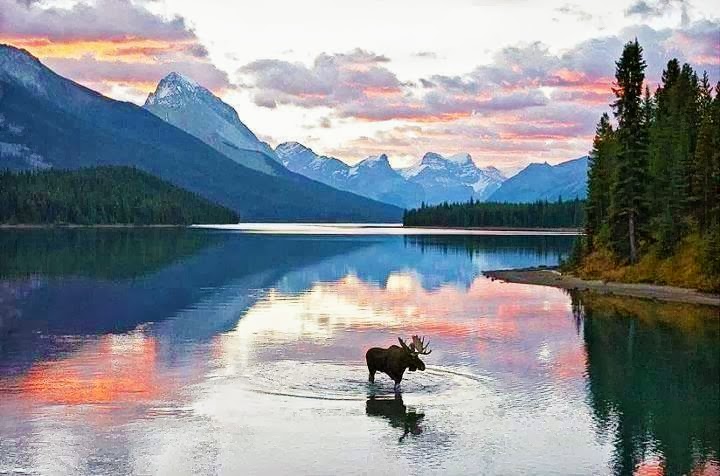



Alaska Cattle Drive
By Tommy Geyer
In the upper Tanana Valley, in the shadow of the Alaska Range, a farming and ranching tradition is being handed down from generation to generation. Modest in size compared to some of the large ranches in the lower forty-eight, it keeps us as busy as we want to be, and even a little more.
What began many years ago as a dream with a few heifer calves has grown to about sixty head of beef cattle and a small mob of horses. Recently, we had our fall roundup, an annual event that all of the young cowboys anticipate.
Each year when the first snows fall and the temperatures plummet to well below freezing, we bring the cows home from their summer range. A handful of the young men here in our community, and an occasional girl or two saddle up to drive out a small herd of beef back from the summer pastures across the Alaska Highway.
I'm not sure if you've ever seen cowboys dressed in stocking caps and Carhartts, but regular cowboy garb doesn't quite
cut the cold, biting wind that blows up in our Alaskan country. You might look at our bunch of young cowhands and shake your head, but I was impressed with their horsemanship and good cow sense.
We had plenty of help on our most recent fall roundup with six horsemen and one little cowgirl, my daughter Kerri. Kerri, age nine, was riding on an old gelding named Pogo. They call him Pogo because he is a little bouncy.
Joe and Seth left home before the other riders to try to get the cattle gathered up from the different pastures. By the time the rest of us arrived, the cattle were scattered again, heading back out to pasture to find something to eat.
It's important to make sure all cattle are gathered up together before we start. Last year, we took off with a bunch of cattle, accidentally leaving behind a dozen or so. We had to return later and bring the rest home after we discovered they were missing. Keeping the cattle all together is also very important. Most of the beef cows like to stay in a herd, but we have a couple of old milk cows that like to strike out on their own.
A few years ago we tried using hand-held radios to communicate during the roundup. But, it seems everyone knows the routine now, so why bother? Even the cows know where they are going, as some have made the trip as many times as some of the cowboys.
Once we get the cattle out of their pastures, the guys surround them and start pushing them across the hay fields. Joe gets in front (riding point) to make sure they don’t stampede. A couple of other horsemen swing in from the sides, (riding swing) to make sure none of the cows break away. The rest of the cowboys and my little cow girl push the cattle from riding drag. Yours truly generally rides drag also, in the cab of a warm pickup truck. Occasionally, I might honk the horn or even jump out if a situation arises. Generally I just yell, but nobody pays any attention.
We drift the herd through the hay fields and up the road toward the Alaska Highway. Peter and Stacey are at the highway to stop traffic or to stop the cows if necessary. Fortunately, there’s not much traffic this time of year, and the coast is clear, except for one thing. Stacey has parked her pickup right in the middle of the road just on the other side of the highway. Lucky for us, there is no traffic for miles, and we get the cows to split and start around the pickup.
Once around the truck, the cows herd up again and take off toward their wintering area at the base of the MaComb Plateau. It's just a couple of more miles from here, and except for an old black cow that heads for the woods a couple of times, things go well.
When we get to the corrals at home, we're still not finished. We sort the cattle into groups. The calves are weaned by placing them in a pen by themselves, while the cows are separated into two groups according to their body condition.
Weaning is a time that most folks dread because for two days and nights our little valley is filled with the lonely wailing of mama cows bawling for their calves. The noise is a little annoying, I suppose, but its part of the ranching tradition.

No comments:
Post a Comment